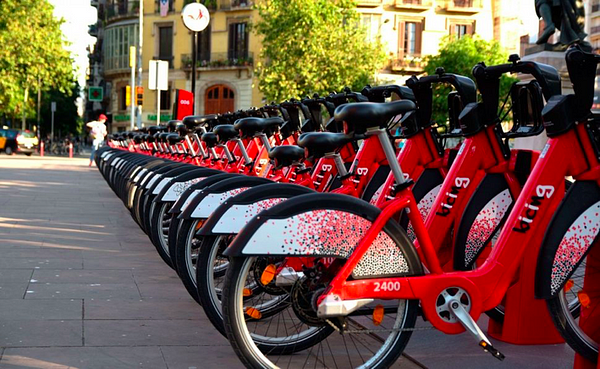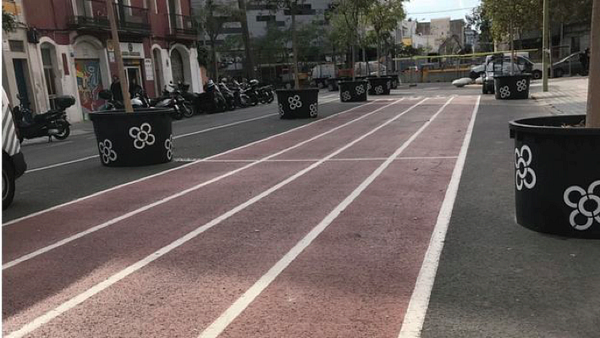When you hit it right on these five dimensions: chances are good that will make more revenues via your own hotel website
March 3, 2020Next level male grooming
March 6, 2020A story by Manuel J Aragón
Cities have always had a relevant role in our society, they have been central to the development of human relations. Such is the case of Ancient Greece where politics as we understand them were born. In Plato’s scrips we witness the development of cities as hubs where commerce bloomed, war strategy was nurtured, and even human rights started to shape. According to Plato, cities were only as strong as those who commanded them, and he went even further as to say that cities would take on the characteristics of their rulers. But being the birthplace of politics was only the beginning of what cities would become.
Nations came and cities prevailed
Fast-forwarding a bit, wars and treaties were fought and implemented, and cities are no longer the centre of decision making, we now have countries and economic blocks: The European Union, NAFTA, Mercosur. However, cities still have their power and pull on society. A clear example are those that stand by themselves in a massively globalized world: Berlin, Milan, New York, London, Madrid. Such is their importance than even with Brexit on track, there are hallway discussions about making a special jurisdiction for London since its such an important spot for commerce, labour, and other cultural factors.
Accordingly, cities have shown that they are not stoic over time; they are flexible, quick to evolve and re arrange themselves to our needs as a society, almost in a biological rhythm. Cities are as alive as ecosystems, not in vain they are ecosystems of their own. However, not all cities enjoy the same development, some have a hard time trying to satisfy their inhabitants. Governmental powers sometimes get overwhelmed by the organic growth of cities and thus their overgrowth becomes their demise. Such is the case of Cairo, a city so overgrown, that for Egyptians it became easier to create a new capital from scratch.
First, they were cities, now they became smart
Uncontrolled growth is not optimal, and that is why the term “smart cities” got coined. A city management that has a cohesive mentality, integrating all the axis of society: transport, education, leisure, business. Obviously, these considerations are not possible without a political willingness factor (I assure you I am trying to steer clear from that subject as much as possible). But having a flexible city, that is able to adapt itself to its inhabitants’ needs is the ultimate social environment. How to achieve this is the imperative question, but as Plato let grounds for our modern political system, some city governments have developed a series of blueprints on smart cities; such is the case of London’s underground, Copenhagen’s bike roads, San Francisco’s tram way, just to name a few. It is a call to attention the fact that most of the examples spin around transport, basically because transport is to a city what the blood system is to mammals. And with such an idea, Curitiba’s ex-mayor Jaime Lerner has made quite a successful career when it comes to urban planning and transportation: with his motto “cities are like turtles”.
However, there is one city that steals the spotlight when I think about a smart City, its privileged position, size, population, and status has set the perfect ground to become one of the most appropriate blue-prints for a smart city development. And that city is none other than Barcelona.
Blessed among nature
Barcelona is geographically encased between the Mediterranean Sea, two rivers (Llobregat and Besos), and the mountain range of Collserola. This has given the city a privilege when it comes to urban planning; as Jaime Lerner simply put it ‘If you want creativity, take a zero off your budget. If you want sustainability, take off two zeros’ in the first scenario, Barcelona has less zeros than other cities in the subject of space. In fact, when the population of the city became so big that it started to drip out from walls of the urban settlement Barcino (the name given to this place by the Romans) an engineer called Ildefons Cerdà i Sunyer put himself to the task of developing an orderly planned expansion for the city, the Eixample district; he presented this design in 1859.

With octagonal blocks on an octagonal layout to increase visibility, air flow and make transportation easier. From 1859 to the date when it was built, between 1903 and 1905, there were some political turmoil and changes to the original plans, but Cerdá’s original idea prevailed almost untouched. To this day Ildefons Cerdá i Sunyer is regarded as the father of urban planning.
Back in the XIX century, creativity made it possible for Barcelona to grow in an organized way given its physical limitations. However, today’s challenges are less about the space and more about the quality of life. Cities are now faced with issues of pollution, traffic, noise, and an overall loss of quality for their inhabitants.
We expanded, now we reclaim
Nevertheless, Barcelona has always been an Avant Garde city; and as we have stated before, change always requires the peoples will and especially the will of those in power. Which brings us to the second aspect of the quote from Lerner. If you want sustainability, take off two zeros’ in this particular case, those two zeros are not necessary money, but the aforementioned quality of life. And the ruling class of the city has made it its mission to create a truly sustainable city.

The townhall of Barcelona has been creating different plans in order to reduce pollution in the city, from very used and well known measures as taxing the entry to certain areas of the city by car; and incentivising the usage of bicycles, with over 300 km of cycling lanes across the city and the ‘Bicing’ program where citizens can pay a monthly fee and have access to the Township Bikes.
But after the Spanish declared the environmental emergency in 2020, Barcelona was already a step ahead with the ‘Super-block’ program (Super-manzanas in Spanish). A program that aims to give the city back to its inhabitants, restricting motorized traffic even further inside some areas and creating parks and leisure spaces for the residents of these areas.

This program is relatively new, and it requires time to prove its worth, but one thing is for sure. Barcelona is a very smart city that inputs every variable for inclusion and a better quality of living, in spite of the turmoil of living today, it prevails as a city of the world, a Hub of innovation and technology, beautifully encased in a frame made by nature. Barcelona is and always will be the blueprint for smart cities.
This is a story of the Futurist Club
By Science of the Time
Written by: Manuel J Aragón

Manuel J Aragon S is an economist and chef, currently studying a masters in Tourism Management and Planning. He is passionate about public policy and social development; his work experience is strongly related with project structuration and management on the public sector of Colombia, his homeland.
He describes himself as a grounded idealist that thinks it is possible to heal society one individual at a time. He finds this inspiration through his hobbies of reading and writing. He also likes meditation, sports, public speaking, effective communication, and subjects about personal development.
He is an ambitious individual and hopes to create a foundation that researches, collects, and documents indigenous folklore, food traditions, and recipes; all in order to create social and economic development on culture-rich societies.
His motto #MyLifeInACupOfCoffee.



